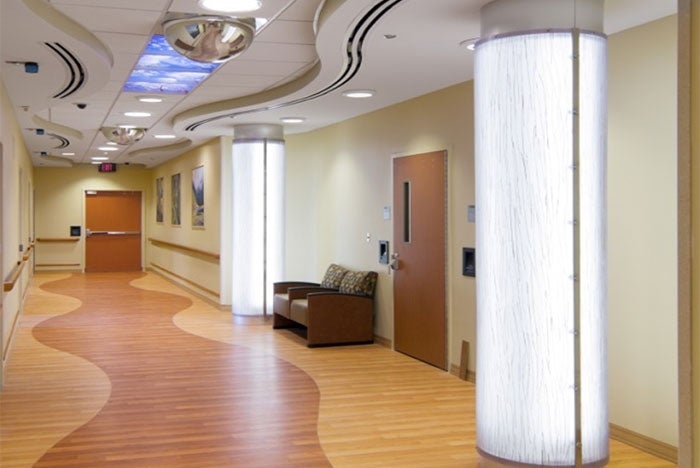Design framework created for VA mental health centers

LED columns in the extra-wide patient room corridors at VA Ann Arbor Healthcare System are timed to circadian rhythms.
Although the Department of Veterans Affairs (VA) has developed several resources to assist in the planning and design of acute inpatient mental health (AIMH) facilities, three researchers found a need for empirical data that correlate design interventions with improved patient outcomes.
The researchers, Lisa Sundahl Platt, CSSBB, EDAC, LEED AP BD+C, CEO and founder of UMNSystems LLC, a Human Experience Research & Design firm; Sheila Bosch, EDAC, LEED AP, assistant professor, department of interior design, University of Florida; and Daejin Kim, postdoctoral researcher in health care environments for older adults, North Carolina Agricultural and Technical State University, set out to develop a set of measurable human responses to the built environment criteria within a framework that can be used by the field. This framework was published in the Journal of Interior Design in 2017.
The “Considerations for person-centered mental health facility interior design” framework consist of 56 design strategies organized into six domains: involve, comfort, personalize, engage, protect and sustain. The researchers landed on these after a multimethod inquiry that included a literature review and post hoc qualitative analysis of AIMH facilities within three VA systems chosen for their commitments to patient-centered design: VA New Jersey Health Care System, VA Tennessee Valley Healthcare System and VA Ann Arbor Healthcare System.
The comparative case studies for the three facilities consisted of data collected during a predesign ideation phase, group interviews with patients and staff to identify veteran-centered design strategies, listening sessions and co-design sessions to gain feedback on design layouts.
The researchers say that the framework is not designed to replace VA guidelines, but should be used as a companion resource for design teams and to spur additional research on the impact of design on mental health.




